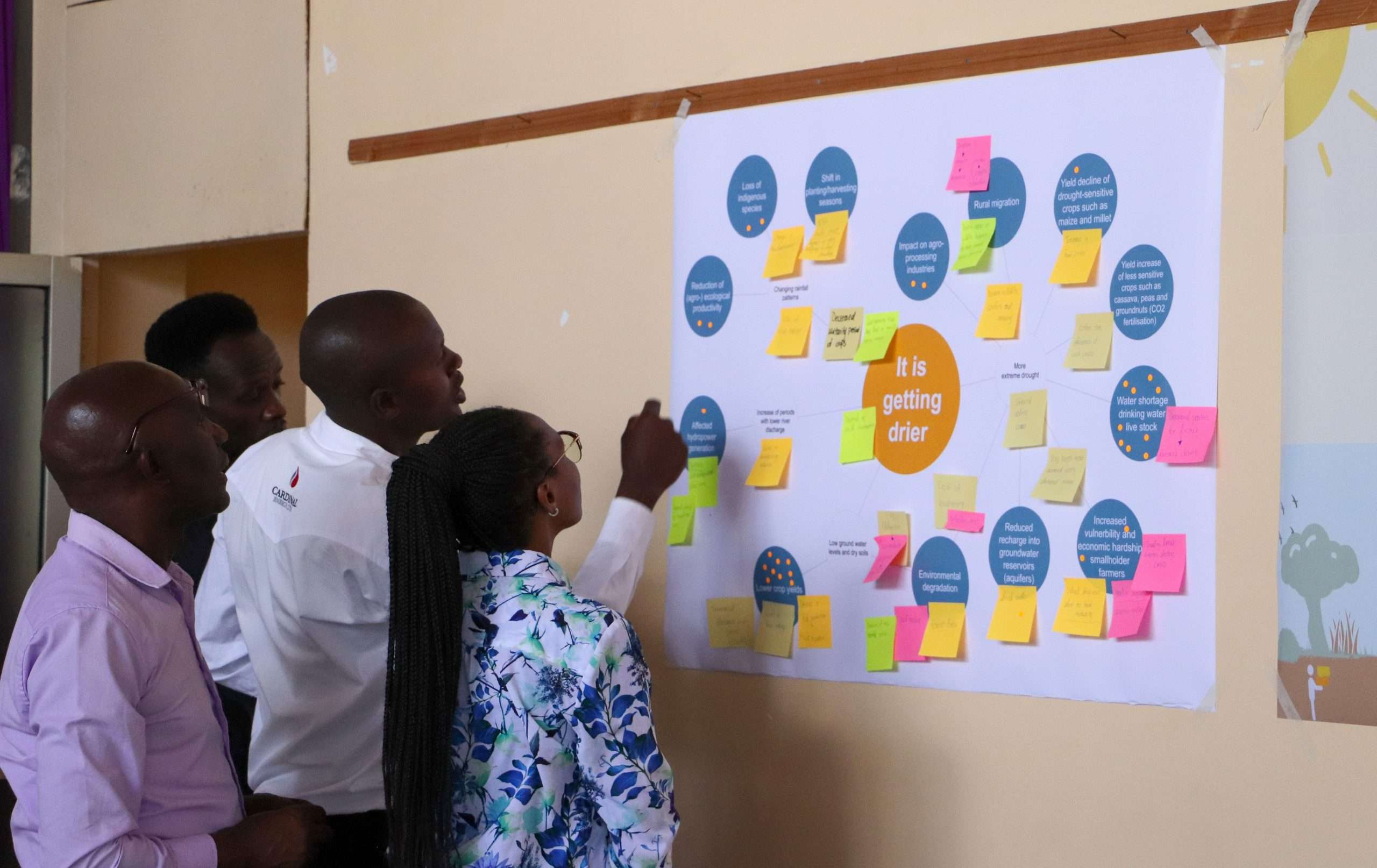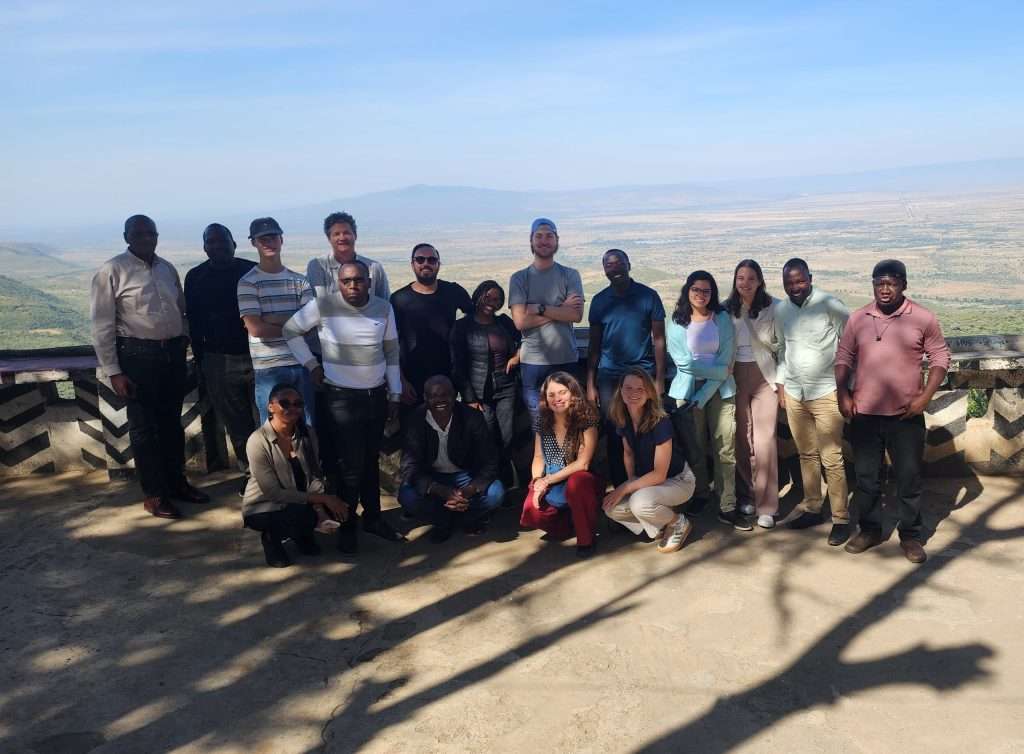Advancing Progress in Kenya
November 13, 2024
From October 28th to November 4th, 2024, the SAFE4ALL project team visited Kenya, achieving significant milestones that foster progress across various objectives. This week-long visit included a workshop with key stakeholders, a field visit to connect with farmers, and strategic meetings strengthening partnerships within the SAFE4ALL consortium. Each activity provided invaluable insights, contributing to the project’s long-term goals of improving climate resilience.
Workshop with Stakeholders in Nairobi (Tuesday, October 29)
On Tuesday, October 29, SAFE4ALL hosted a workshop in Nairobi with stakeholders that included farmers from multiple Kenyan counties, meteorological officers, local academics, and representatives from the agri-food chain. The workshop aimed to introduce participants to SAFE4ALL’s objectives and tools while gathering information to guide the development of the Climate Impact Atlas for Kenya and the learning program for agricultural practitioners.

Facilitated by Prof. John Wesonga of Jomo Kenyatta University of Agriculture and Technology, the workshop brought together participants from the counties of Nairobi, Narok, Kisumu, and Nyandarua. Key SAFE4ALL tools were presented, including the project overview and the DROP app by Spyros Paparrizos (Wageningen University & Research), the Uliza-Chatbot by Monica Estebanez Camarena (Weather Impact), and the Climate Impact Atlas by Hasse Goosen (Climate Adaptation Services).




The interactive session, led by CAS, encouraged participants to explore climate impact relationships specific to their regions. Impact diagrams focused on three primary climate hazards—drought, rising temperatures, and extreme rainfall/flooding. Participants validated these diagrams, adding personal experiences of climate hazards in their communities, which led to an enriched understanding of local climate impacts.

Next, we delved deeper into understanding the specific impacts of climate change on individual crops. Impact diagram posters were prepared in advance, this time focused on specific crops. Participants reviewed these diagrams and indicated, as accurately as possible, how climate change is likely to affect various cropping systems. This interactive session supports the project in developing crop- and region-specific indicators, while also enhancing farmers’ understanding of the potential climate-related threats.
After discussing impacts and risks, the next exercise introduced adaptation options and resilience strategies. A framework was presented to categorize different types of interventions:

The three types of adaptation interventions each play a vital role. In crafting an adaptation or resilience strategy, the key is to find a balanced approach among these types. The concept of an adaptation pyramid was introduced to illustrate how choices within each layer interact and influence one another. During an interactive exercise, participants created adaptation strategies for their regions by listing preferred measures on a poster. The primary aim of this session was to shift the focus from merely identifying risks to exploring opportunities for adaptation.
Finally, an interactive exercise was conducted to understand participants’ learning needs and generate ideas on how the learning program can be structured to meet these needs and preferences. The participants were divided into three stakeholder sub-groups, each aligned with the learning network being developed as part of the program. The groups were as follows: core champions/tool owners—technical partners who can take ownership of the SAFE4ALL climate services developed; enablers—decision-makers, policy advisors, educators, and extension officers who can use the SAFE4ALL climate services to inform decisions and policy changes while educating others throughout the food system supply chain; and end-users—farmers and others active within the food supply chain who will use the climate services to guide their own decisions. Each group worked on answering key questions to contribute to the design of the learning program.
Field Visit to Narok County (Wednesday, October 30)
On Wednesday, October 30, the SAFE4ALL team visited farms across Narok County, providing a valuable opportunity to engage with smallholder farming communities and understand their needs. Led by Robert, a local agricultural extension officer, the team visited three farms and held discussions with around 20 farmers, learning about their primary crops (maize, wheat, and potatoes) and the indigenous methods they use to predict weather.




With changing rainfall patterns and unpredictable weather, local farmers face significant challenges in crop planning and yield maintenance. This visit allowed SAFE4ALL partners to directly observe the climate information needs of these communities and gauge their interest in the project’s support services.




Visit to Kenya Meteorological Department (Monday, November 4)
On Monday, November 4, SAFE4ALL partners met with the Kenya Meteorological Department (KMD) in Nairobi, reaching several fruitful agreements. KMD and SAFE4ALL reaffirmed their commitment to advancing climate resilience efforts in Kenya through a shared vision and cooperative approach. By collaborating on the Climate Impact Atlas, both organizations aim to provide vital, actionable climate information that supports sustainable development across diverse communities.

The Kenya visit marked a significant step forward for SAFE4ALL, with meaningful exchanges and new insights that will guide the next phases of the project. By connecting directly with farmers, local experts, and key institutions like KMD, the SAFE4ALL team has laid a strong foundation for practical climate resilience strategies tailored to Kenya’s unique challenges. These efforts are set to empower local communities with tools and knowledge that will not only address immediate climate impacts but also equip them to make informed, long-term decisions for sustainable growth.
